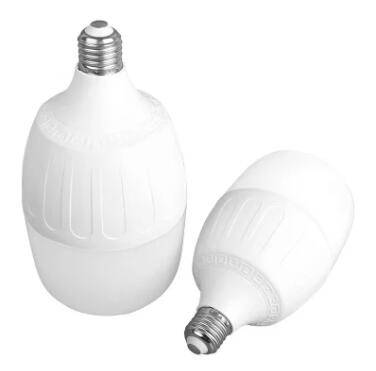Brightening Perspectives: Understanding the Significance of Lumens in Choosing LED Bulbs
2023-11-28
Introduction:
In the quest for efficient and effective lighting solutions, the traditional measure of watts is gradually giving way to lumens as the key metric for evaluating brightness. As LED (Light Emitting Diode) bulbs become the go-to choice for lighting, understanding the significance of lumens is crucial in ensuring that the chosen bulbs meet specific lighting needs. In this blog, we will explore the importance of lumens when choosing LED bulbs and how this metric empowers consumers to make informed decisions about the brightness of their lighting.
1. Redefining Brightness: From Watts to Lumens:
- Traditionally, the brightness of a bulb was associated with its wattage, which measured the amount of energy consumed. However, with the advent of energy-efficient LED technology, the relationship between watts and brightness has become less direct. Lumens, the measure of visible light output, have emerged as a more accurate indicator of brightness.
2. What Are Lumens?:
- Lumens represent the total amount of visible light emitted by a light source. The higher the lumens, the brighter the light. This metric provides a standardized way to compare the brightness of different types of bulbs, irrespective of their energy consumption.
3. Choosing the Right Lumens for Different Spaces:
- The appropriate number of lumens depends on the specific lighting needs of a space. For example, a bedroom may require a different brightness level than a kitchen or a workspace. Understanding the lumens needed for each area ensures that the lighting is both functional and aesthetically pleasing.
4. Lumens and Wattage:
- While lumens indicate brightness, wattage measures the amount of energy consumed. In the context of LEDs, lower wattage bulbs can produce the same or even higher lumens compared to higher wattage incandescent bulbs. This is a testament to the energy efficiency of LED technology.
5. Correlated Color Temperature (CCT) and Lumens:
- Lumens are closely tied to the Correlated Color Temperature (CCT) of a bulb, which determines the color appearance of the light. The combination of lumens and CCT allows consumers to choose bulbs that not only provide the desired brightness but also create the preferred ambiance.
6. Understanding Lumen Output in Common Bulbs:
- As a reference, a standard 60-watt incandescent bulb produces approximately 800 lumens, while a 100-watt bulb produces around 1600 lumens. LED bulbs, however, can achieve similar or higher brightness with significantly lower wattages.
7. Lumen Requirements for Different Applications:
- Different applications have specific lumen requirements. For example, task lighting may require higher lumens for visibility, while ambient or accent lighting may have lower lumen needs for creating a mood or highlighting specific features.
8. Enhanced Energy Efficiency:
- The significance of lumens in LED bulbs lies in their role in energy efficiency. By choosing LED bulbs based on lumens rather than watts, consumers can select the right brightness level while minimizing energy consumption, resulting in lower electricity bills and reduced environmental impact.
Conclusion:
As LED technology continues to redefine the lighting landscape, the significance of lumens becomes increasingly apparent. Lumens provide a standardized and accurate measure of brightness, allowing consumers to choose LED bulbs that meet the specific requirements of each space. By embracing lumens as the guiding metric in selecting LED bulbs, individuals can not only enhance the functionality and aesthetics of their lighting but also contribute to a more energy-efficient and sustainable future. Brightening our spaces with LED technology goes beyond watts; it's about understanding lumens and making enlightened choices in the pursuit of the perfect illumination.



